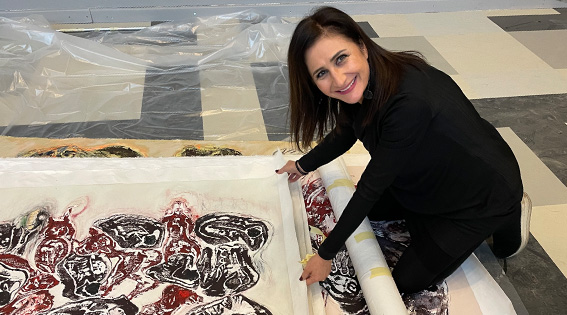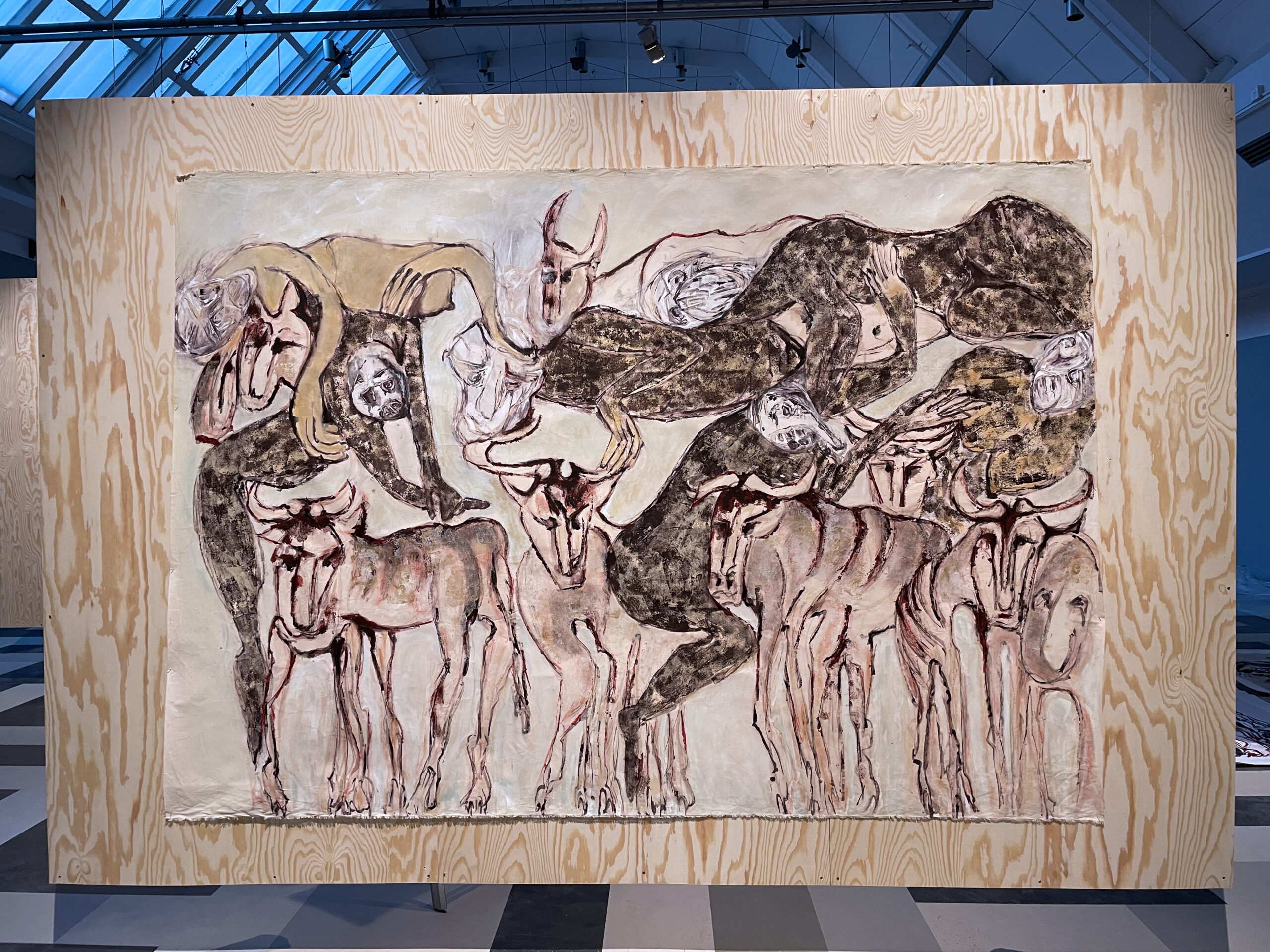


Opening hours:
Wednesdays-Fridays: 12-18, Saturdays: 11-15.
How do you capture a movement? Can you capture pain in a painting? Nahrin Malki can. She paints from the inside, from the inside of the object. We see something unfolding in the painting, but also a force that seems to move around the painting’s very core. The body perceived is anonymous. Animal, human, face, or torso? Female? Yes, definitely female. Whatever female means.
While painting Nahrin Malki uses stamps, knifes, paintbrushes – the extensions of mind, nerves, and heart. The subject matter of Nahrin’s art is painful but it is easy to be drawn into details, the combination of vulnerability and strength. What is it that I am seeing? A human abdomen? A seal’s fleshy flipper? Legs of an ox, the foot of a woman
A central aspect of Nahrin Malki’s art is the size of the paintings. The artworks are large, the motifs ask to be seen. In a painterly tradition Nahrin follows a trajectory that previously has been occupied by men: Pablo Picasso, Francesco de Goya – brutality and size go hand in hand. But in the work of Nahrin Malki the aim is not to create a sensation of shock, but rather to connect to the viewer through evoking feelings of empathy: sadness, tenderness, wonder.
Nahrin Malki paints from a very specific point of departure. The DNA-traces of collective trauma, her grandmother’s experiences of Seyfo, the genocide on Christian minorities in what once was the Ottoman Empire, brutal mass murders and raping of women in the year of 1914, the year of the sword. Shameful reoccurrences in history: the Holocaust, the Soviet famine, Rwanda, Cambodia, Darfur, Tigray… the shameful nature in us. And at the same time, the experiences that ultimately make us human – our capacity to recognise the pain in others. To understand that I am because you are.
